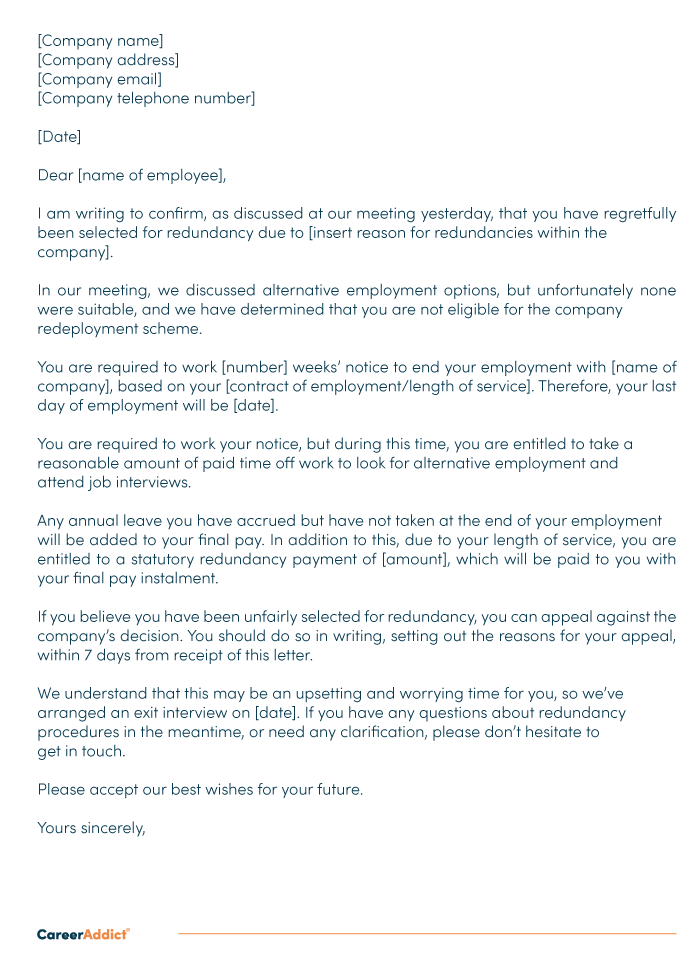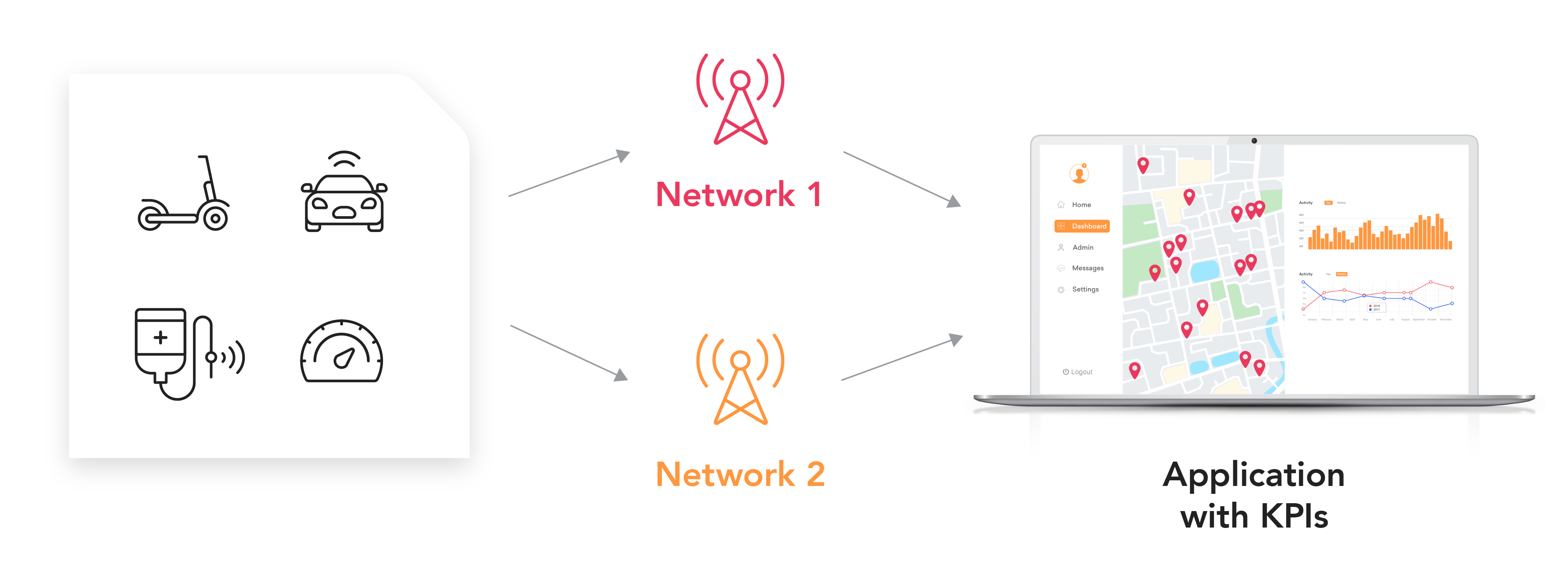If a Company Goes Bust Who Pays Redundancy? Legal Insights for UK Employees
If a Company Goes Bust Who Pays Redundancy? Legal Insights for UK Employees
Blog Article
Checking Out the Operational Characteristics of Company Redundancy and Its Long-Term Sustainability

Redundancy Techniques for Service Continuity
In order to guarantee undisturbed operations, companies should apply reliable redundancy strategies for business continuity. Redundancy in this context refers to the replication of critical elements or functions within a system to mitigate the influence of prospective failures. By integrating redundancy strategies, organizations can improve their durability versus disturbances triggered by different aspects such as natural calamities, devices failures, or cyber-attacks.
One common redundancy method is the application of back-up systems and information storage space options. This includes developing matches of crucial information and systems that can be triggered in instance of a key system failing. Furthermore, organizations can establish redundant communication channels and power resources to keep connectivity and procedures throughout unforeseen events.
Moreover, cross-training employees to carry out numerous functions within the business can function as a valuable redundancy strategy. If vital workers are unavailable due to ailment or various other factors, this makes certain that important jobs can still be carried out even. Generally, effective redundancy techniques are essential for companies to maintain operational continuity and reduce the impact of prospective disturbances.
Effect of Redundancy on Business Durability
Provided the essential role redundancy approaches play in guaranteeing company continuity, exploring the impact of redundancy on organizational durability comes to be necessary for recognizing the alternative functional characteristics of a business. Redundancy, when purposefully executed, can substantially add to improving an organization's durability in the face of unexpected difficulties.
Moreover, redundancy can boost employee morale and confidence, understanding that there are backup plans in position to deal with unanticipated circumstances. This complacency can lead to enhanced performance and a more positive work setting. Furthermore, redundancy can cultivate innovation and imagination within a company as workers feel empowered to take computed threats, knowing that there is a security web to support them in situation of failure. Generally, the influence of redundancy on business durability is extensive, forming the long-term sustainability and success of a company.
Balancing Efficiency and Adaptability in Redundancy
Accomplishing a harmonious equilibrium in between functional efficiency and flexible adaptability is a critical difficulty in the critical deployment of redundancy within organizations. Efficient operations are vital for keeping efficiency and cost-effectiveness, making sure that sources are made use of optimally. Nonetheless, too much focus on effectiveness alone can lead to strength, making it difficult for companies to adapt to unpredicted modifications or challenges. On the various other hand, flexibility enables organizations to react nimbly to progressing situations, cultivating development and resilience. Yet, excessive flexibility without a strong functional foundation can cause inefficiencies and incongruity.
To balance effectiveness and flexibility in redundancy planning, companies should very carefully assess their functional click to read needs, market characteristics, and critical objectives. Executing lean techniques can improve efficiency by removing and streamlining processes waste, while promoting a society of versatility and continuous renovation can boost adaptability. Furthermore, buying cross-training programs and durable communication networks can help cultivate a flexible workforce with the ability of taking care of diverse jobs during durations of transition. Eventually, locating the right equilibrium between efficiency and adaptability is critical for building a sustainable and resistant company in the face of unpredictability.
Long-Term Sustainability With Redundancy Preparation
To make certain long-lasting feasibility and security, companies must tactically align their redundancy planning with long-term sustainability objectives, consequently harmonizing operational efficiency with flexible flexibility. Firms need to check out redundancy not as a reactive remedy to immediate troubles but as a positive strategy for long-term success.

Aggressive Steps for Lasting Company Workflow
How can firms proactively enhance their operational sustainability for lasting success? Carrying out positive procedures is important for firms intending to make certain lasting procedures. One key technique is to spend in innovation and technology to simplify processes, decrease waste, and remain affordable in the marketplace. Adopting lasting methods such as lowering energy intake, decreasing carbon footprint, and optimizing resource usage can not just benefit the atmosphere yet additionally result in cost savings in the long run.
Furthermore, fostering a culture of continuous learn this here now renovation and knowing within the organization can boost flexibility to changing market conditions and customer demands. Encouraging employee participation in decision-making processes and offering chances for professional advancement can increase spirits, productivity, and general efficiency. Establishing clear objectives, keeping an eye on key efficiency indicators, and routinely reviewing progress are essential elements of proactive sustainability monitoring.
Teaming up with providers, customers, and various other stakeholders to advertise sustainable techniques throughout the supply chain can create a ripple effect of favorable impact - redundancy pay if company goes bust. By taking positive actions in the direction of functional sustainability, companies can construct strength, drive innovation, and secure their long-term success in an ever-evolving service landscape
Verdict

In the world of business monitoring, the calculated release of firm redundancy stands as an essential yet complex method that requires a fragile equilibrium in between functional effectiveness and long-term feasibility. By studying the functional dynamics that underpin company redundancy and reviewing its broader ramifications for business durability and versatility, a nuanced understanding of how redundancy strategies can form the future trajectory of a company begins to unfold.Provided the important duty redundancy approaches play in making sure organization continuity, exploring the influence of redundancy on organizational durability comes to be vital for comprehending the alternative functional characteristics of a firm. In general, the effect of redundancy on business resilience is profound, shaping the long-term sustainability and success of a business.
In final thought, understanding the operational characteristics of company redundancy is critical for ensuring long-lasting sustainability.
Report this page